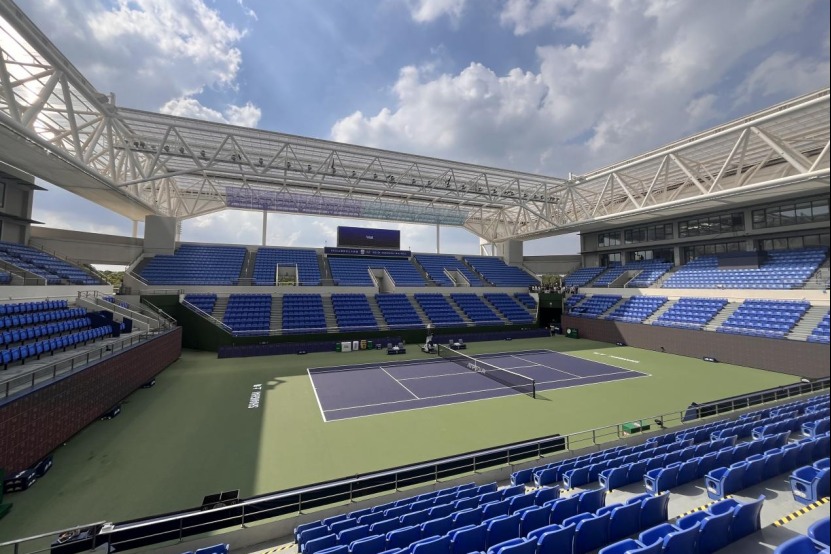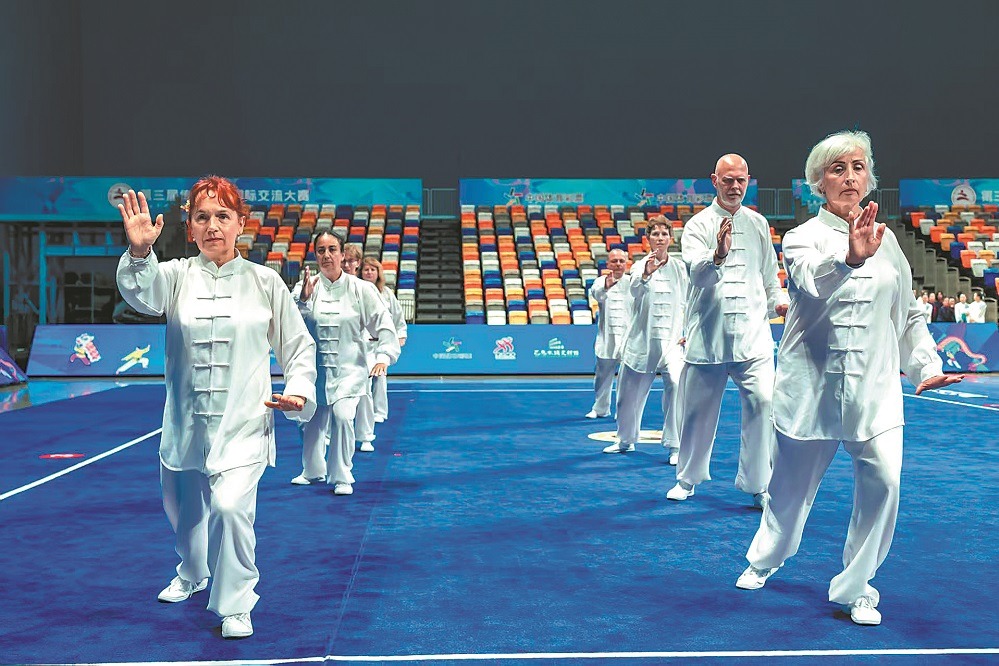Water smart design


Environmentally friendly 'sponge city' construction keeping the streets and roads of Asian Games Village in pristine condition
As you stroll through the Hangzhou Asian Games Village, one of the first things that catches your eyes is the immaculate streets. If you were to pour a bottle of water onto the road surface, regardless of how fast it was flowing, it would rapidly absorb and the road surface would swiftly become dry, almost like magic.
In reality, this phenomenon is a result of the well-thought-out urban planning and construction management employed in the "sponge city" development of the village.
Sponge cities are a concept in urban stormwater management that aim to make cities more resilient to environmental changes and better equipped to handle natural disasters, such as those caused by heavy rainfall.
As the moniker suggests, a sponge city absorbs, stores and purifies rainwater when it falls, and when necessary, releases and utilizes the stored water, allowing rainwater to flow freely within the urban environment.
The media village within Hangzhou's Asian Games Village, covering an area of approximately 196,000 square meters, has earned distinction as a provincial-level exemplar in the development of sponge cities. Furthermore, it has secured central government financial assistance as a model project within Hangzhou's Xiaoshan district.
According to Geng Lei, a staff member at the Asian Games Village's property and information technology center, the sponge city concept initially focused on managing urban stormwater runoff, however it has since evolved to encompass residential aspects, necessitating integration with the overall architectural design.
The sponge city construction in the media village is a prime example of this evolution, as it prioritizes aesthetics by eschewing the use of manhole covers, resulting in a pristine and seamless road surface, Geng said.
The development of a sponge city involves different stages.
In the initial planning phase, the Asian Games Village transitioned from managing rainwater through "infiltration, retention, and storage" to a more comprehensive approach of "purification, utilization, and discharge". This created a system for organic rainwater circulation to support the green Asian Games.
Furthermore, the village conscientiously adhered to the low-impact development philosophy, exercising judicious control over construction intensity, Geng added.
They designed an ecological sponge base, divided into subunits based on rainwater collection zones, with features like permeable pavements, green spaces and rainwater reuse reservoirs, connected by sponge eco-corridors. This forms an integrated ecological sponge network for the media village.
Geng explained, "a sponge city allows rainwater to soak into the ground naturally. We collect and treat it for various uses like watering green areas and cleaning surfaces."
Additionally, the village architects combined landscape design with low-impact development techniques to make the sponge city in the media village practical and visually appealing.
For instance, the roads may look like rubber tracks, but are actually made of special concrete that lets water seep through, showing how they've made both function and beauty a part of the design, Geng said.
"We've effectively managed rainfall runoff by balancing water quantity and quality, safety and ecology, distribution and concentration, both above and below ground. This minimizes harm to the natural environment caused by urban development," explained Geng.
Most Popular
- Making a racket about pickleball
- Djokovic, Federer reunion adds more shine to tournament
- Going out swinging
- Defending champion Gauff rallies past Bencic into China Open quarterfinals
- 'Unacceptable': McIlroy slams Ryder Cup hecklers
- Gabriel strikes late to power Arsenal past Newcastle






























